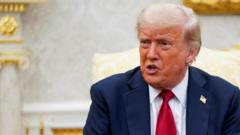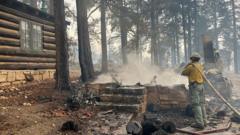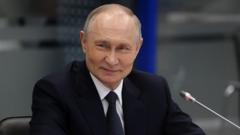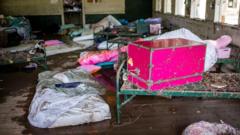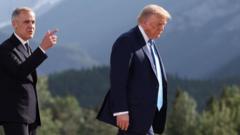As Election Day approaches, early voting statistics show an impressive turnout, with key races in battleground states remaining competitive and uncertain. Analysts point to a tight race as key demographics play crucial roles in the political landscape.
Americans Turn Out in Record Numbers Ahead of Election Day

Americans Turn Out in Record Numbers Ahead of Election Day
With one day remaining until the pivotal U.S. elections, approximately 75 million people have cast their ballots early, reflecting a nation deeply engaged with its democratic process.
In less than 24 hours, Americans will head to the polls in what promises to be a historic election as approximately 75 million voters have already participated in early voting. This figure showcases the heightened political engagement among citizens, with several states showing over 50 percent of eligible voters having voted ahead of Election Day.
Historically, early voting suggests that turnout will fall between the record-breaking 66 percent from 2020 and the 60 percent from 2016. Current polling data reveals that Vice President Kamala Harris maintains a slim lead in Nevada, North Carolina, and Wisconsin, while former President Donald Trump holds an advantage in Arizona, leading to closely contested races in Michigan, Georgia, and Pennsylvania.
Nate Cohn, the chief political analyst for The New York Times, stated that the final polls typically reveal a leading candidate, but this election is different, highlighting the uncertainty across all battleground states where no candidate holds a decisive advantage within the margin of error.
On the campaign trail, Harris focused her efforts on community engagement during a visit to a church in Detroit, while Trump made headlines at his rally by suggesting he shouldn't have exited the White House after the 2020 election.
In response to reader inquiries, reporter Campbell Robertson explained Pennsylvania’s significance as a swing state. The composition of the state is marked by its two major cities, Philadelphia and Pittsburgh, surrounded by increasingly liberal suburbs. Yet, this is juxtaposed against a significant rural population, where former industrial roles have shifted political allegiances, creating a unique demographic tapestry that will play a pivotal role in the elections.





